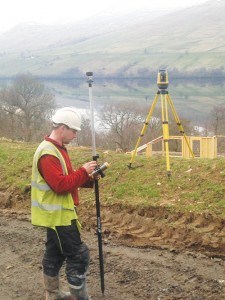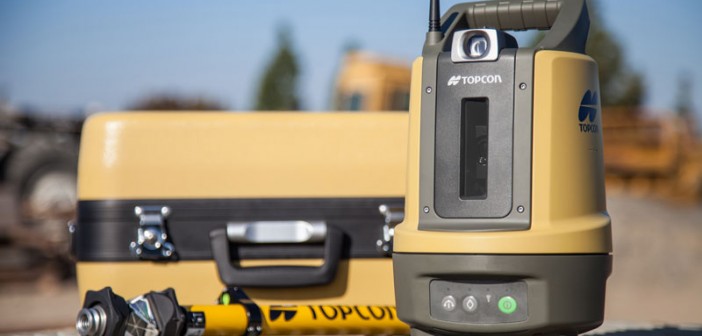A technological innovation has been bedding in with positive results for the efficiency of work on a number of construction sites over recent months. The new device is Topcon’s LN-100 robotic layout navigator; a highly advanced site measurement and setting out instrument, which is making life remarkably straightforward for teams on construction projects.
One firm that has been making good use of the LN-100 is Gavin Brown Contracts, based in Madderty near Perth in Scotland. The company carries out civil engineering and groundworks for local housing developers and other private clients and contractors in the Perth area. Proprietor and civil engineer Gavin Brown is now familiar with use of the LN-100 after accepting the opportunity to introduce the instrument to contracts on a trial basis.

Topcon has designed its robotic navigator tool for straightforward application to numerous different tasks on all different sizes and types of site work. The instrument utilises Topcon’s time-proven laser and robotic total station technologies, so can be used for setting out and measurement and recording of work carried out on site.
The LN-100 gets its simplicity of use partly from its wireless connection to a hand-held touch screen tablet controller. This means one person can operate the instrument. After the point to be set out is selected from the controller, the instrument will lock on to a hand-held prism and instruct the user which way to move to locate the point to be set out.
The LN-100 has also been designed with the challenges of life on a construction site in mind. It’s robust design makes it dust and waterproof and suitable for interior and exterior use in all weather conditions. Furthermore, the LN-100 can integrate directly with collaborative BIM (Building Information Modelling) workflows in the field using either Autodesk BIM 360 or Topcon’s Magnet software. Many private sector contractors and major project teams are already making use of BIM, which is expected to filter down to all construction work. Data from BIM can be exported for setting out via the LN-100, which can then also update the BIM model with date and position referenced as-built information.
Other site trials have involved setting up of the instrument on fixed wall brackets for fit-out of building interiors. Trades such as heating and ventilation contractors have used the LN-100 to accurately mark out the positioning of their installations, and then to record as-built data. In similar fashion, Gavin Brown has developed procedures whereby his groundworks gangs use the LN-100 for controlling positioning of earthworks and drainage work.
“Typically when carrying out small projects the design information is not great or leaves gaps, so some of the setting out has to be done on the hoof and it’s difficult to leave the team with all the information they need. The LN-100, however, can be set up, referenced from control points and then left with just the next specific job running,” says Gavin.
“All other information not needed immediately can be hidden. The staff on site need only walk the site with a prism in hand and the instrument tells them when they’re at the correct easterly and northerly coordinates and it tells them the extent of the cut or fill needed at that point.”
Gavin gives the example of manhole construction and drain run control, where the LN-100 has been used to good effect for controlling line and level, and for surveying and recording the positioning for quality control and as-built measurement.
“Since we’ve had the LN-100 we’ve used it to set out house foundations, drainage, roadworks and earthworks where we’ve been able to use the instrument for surveying volumes of work done for payment purposes as well,”.
“We’ve also used it for setting out relatively com-plex raft foundations including the positioning of bolt clusters for bolting down steel columns or other metalwork. Unlike steel framed sheds or warehouses, which usually feature regular column grids, one-off houses or buildings are often built with unique and irregular grid lines.
These would usually be very difficult for sites gangs to set out themselves, but it’s an absolute breeze with the LN-100,” Gavin says.
Some of our team using the LN-100 on Gavin Brown’s sites have “no previous setting out experience whatsoever”.
One particular house his company worked on roughly two years ago took about 14 hours to set out using conventional methods. Then the client made a change to the design that necessitated moving the whole ground layout by a distance of one metre. “It took me a whole day to set it all out again,” Gavin says.
“We have just finished work on the groundworks of a similarly sized house, which took just an hour for the team on site to set out after I’d spent 15 minutes uploading the information to the LN-100 in the office.
“If the client in this case had requested a significant change or shift of the layout, it would have taken just an hour to set it out again. The reduction of impact by saving on costs of delay, particularly for a small firm such as ours, is massive. Use of the LN-100 has really streamlined everything.” he adds.




